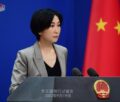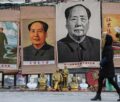Obama-Jintao Speak on India-Pak ties to cast shadow on Singh’s Washington visit

New Delhi: The Obama –Hu Jintao speak on India-Pakistan ties, particularly vocal support to ‘the improvement and growth of relations’ between India and Pakistan has not gone down well with Delhi. While Indian spokesman Vishnu Prakash has curtly stated ‘A third country role cannot be envisaged nor is it necessary’ in resolving all outstanding issues with Pakistan, noted American experts like Ashley Tellis termed the Obama – Hu Jintao remarks as ‘most unhelpful and counterproductive’. There is a general agreement in diplomatic circles that the new stand of US would cast a shadow over Prime Minister Manmohan Singh’s visit to Washington from Nov 21.
Vishnu Prakash statement reiterated India’s commitment “to resolving all outstanding issues with Pakistan through a peaceful bilateral dialogue in accordance with the Simla Agreement”. He also made it clear that a meaningful dialogue with Pakistan can take place ‘only in an environment free from terror or the threat of terror’.
US appears to have quickly reacted to the mood in Delhi because Under Secretary of State for Political Affairs Bill Burns has said ‘nothing much’ should be read in to the joint statement.
‘US relationship with China’, he clarified, ‘will not be at the expense of India’.
Burns also said the United States’s interest in perusing ‘the best and healthiest possible’ partnership with China, will not come be ‘at the expense of other increasingly important partnership, particularly our relationship with India’.
And he went on to add: It is for India and Pakistan to decide on the ‘scope, content and pace’ of the peace process.
Burns utilised his address to the Carnegie Endowment for International Peace in Washington on Nov 18 to outline Obama administration’s deep commitment to deepen ties with India.
“From counterterrorism to non-proliferation, education and agriculture, science and technology and women’s empowerment, our cooperation reflects the depth and breadth of the relationship between the world’s two largest democracies. It also illustrates the deep connections not just between our governments, but more importantly, between our societies and our people.
Let me conclude with a simple observation”, he stated.
Remarking that few relationships around the world matter more to our collective future, or hold greater promise for constructive action on the challenges that matter most to all of us, than the partnership between the United States and India, the US official stated ‘That doesn’t mean that we will always agree, because we won’t. That doesn’t mean that we can always avoid mutual suspicions or misunderstandings, because we can’t. But together we can build, on the solid foundation that already exists, an even stronger partnership that serves not only the interests of our two countries, but of the rest of the international community’.
Text of Burns speak at the Carnegie Endowment for International Peace
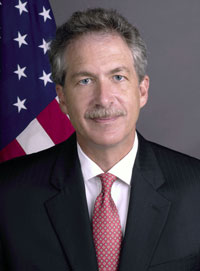 Thank you very much George for that kind introduction. It’s an honor to speak once again at the Carnegie Endowment, an institution for which I have enormous admiration. And it’s a pleasure to speak about a subject, the growing partnership between the United States and India, to which the Obama Administration attaches enormous importance.
Thank you very much George for that kind introduction. It’s an honor to speak once again at the Carnegie Endowment, an institution for which I have enormous admiration. And it’s a pleasure to speak about a subject, the growing partnership between the United States and India, to which the Obama Administration attaches enormous importance.
Diplomats have a well-deserved reputation for being long-winded. But I’ll try to break that stereotype this morning, and offer just a few brief thoughts to help frame the panel discussion that you’re about to have. I should also mention at the outset that I owe a personal debt of gratitude to three of your panelists, Ashley Tellis, Evan Feigenbaum, and Tezi Schaffer, friends and former colleagues who have made remarkable contributions over the years to U.S.-Indian relations, and to the opportunities emerging before us in this new era. Neither Ashley nor Evan nor Tezi has ever been shy about correcting my mistakes in the past, and I can’t imagine that their departure from government service has made them any more reticent today.
It is no coincidence that the first state visit in the Obama Presidency will come from India, and Prime Minister Singh will arrive in Washington next week at a moment of great opportunity. Few relationships will matter more to the course of human events in the 21st century than the partnership between India and the United States. India, as all of you know very well, is a rising global power, soon to be the world’s most populous country, with a trillion dollar-plus economy. The world’s largest democracy, India is a powerful model for other emerging democracies, a model of tolerance and of strength in diversity.
India has an increasingly significant role to play on virtually all of the major challenges of this new century — from global economic dislocation to energy security, climate change, the spread of weapons of mass destruction, and violent extremism. Its role in Asia, already significant, will only grow in the years ahead, and India will be an increasingly valuable partner in the historic effort to, as President Obama put it, “cultivate spheres of cooperation” throughout Asia. A rising India is an essential part of the peaceful and prosperous world that the United States seeks in the 21st century, and our partnership is an essential ingredient for success.
As we look ahead to the visit of Prime Minister Singh, and to the possibilities for expanded partnership which lie before us, let me first recall quickly how we got to this promising moment.
A Strong Foundation
The truth is that we’ve come a very long way together over the past decade and a half. In a speech last June, Secretary Clinton described three phases in our relations. The first phase – or U.S.-India 1.0 – lasted from India’s founding to the end of the Cold War, and was generally characterized by missed opportunities, the result of mistrust and old conflicts between East and West, North and South.
The 2.0 chapter opened in the Clinton Administration, and included President Clinton’s landmark visit to India in the year 2000. The Bush Administration built very effectively on that foundation, culminating in completion of the civil nuclear initiative last year. That would not have happened without bipartisan support in the U.S. Congress, including from three Senators named Obama, Biden and Clinton. The signing of the civil nuclear deal turned a source of friction between our two countries into opportunities for cooperation in trade and job creation, helping India to meet its growing energy needs, and opening up possibilities to work together to strengthen the global nonproliferation regime.
Meanwhile, ties between our two societies have continued to grow. Today there are close to three million Indian-Americans in the United States, who serve as a critical bridge between our countries. More than 100,000 Indian students attend schools and universities in the United States each year, more than from any other country. Our Embassy and consulates in India issue over 50% of all specialized employee visas in the world. Our private sectors are linked by steadily mounting trade flows, which have doubled since 2004 and now exceed $43 billion each year.
Strengthening our Partnership
All of this gives us a very strong foundation on which to build in the years ahead – U.S.-India 3.0. President Obama captured eloquently our sense of what’s possible when he said recently: “Our rapidly growing and deepening friendship with India offers benefits to all the world’s citizens as our scientists solve environmental challenges together, our doctors discover new medicines, our engineers advance our societies, our entrepreneurs generate prosperity, our educators lay the foundation for our future generations, and our governments work together to advance peace, prosperity, and stability around the globe.”
When Secretary Clinton visited India last July, she and Minister Krishna launched a new Strategic Dialogue to develop our cooperation systematically, across a wide range of issues. Let me highlight a few of them, which are likely to figure prominently in Prime Minister Singh’s visit and in our emerging partnership over the next few years.
Global Security
The first pillar of our Strategic Dialogue, and of our expanding partnership, is cooperation on global security challenges. India and the United States share a profound interest in making the world more secure. The tragic attacks of 26/11 were a global event. The violence inflicted on the people of Mumbai, and the loss of six American citizens in those attacks, was a reminder that terrorism represents a common threat to our nations and our people, and we must meet it with a common strategy.
Over the past year our two countries have developed new mechanisms to improve the sharing of information that have helped prevent attacks and protect both our peoples. Home Minister Chidambaram’s visit to Washington last September further strengthened our collaboration in these areas and laid the initial groundwork for what we hope will become an enduring U.S.-India partnership in counter-terrorism.
Afghanistan presents another challenge on which we continue to work together. As our careful assessment of U.S. policy in Afghanistan draws to a conclusion, we will continue to actively consult India as a critical partner in achieving lasting stability there. We welcome India’s significant and positive role in Afghanistan, including the provision of over $1.2 billion in reconstruction assistance.
Of course, we all share an interest in stability and peace between India and Pakistan. We all know the stakes. America has always supported the two countries’ peace process and the resolution of outstanding disputes through dialogue. The pace, scope, and content of the peace process is for Indian and Pakistani leaders to decide. But we have welcomed renewed engagement, including this past summer between Prime Ministers Singh and Gilani, and between Prime Minister Singh and President Zardari.
As India and other nations play an expanded role in resolving international security challenges, the architecture of international institutions will need to adapt to reflect their new responsibilities. India has shown through its moral stature and long tradition of leadership among developing countries that it is well-suited to address the challenges faced by multinational institutions and constructively advance the common good. As Secretary Clinton has said, we look forward to cooperating with New Delhi as it takes on the responsibilities that come with being a global leader.
There is also significant potential in our relationship for expanded defense cooperation. As India modernizes its military, American equipment and technology can and should be a part of that modernization. The recent conclusion of an End-Use Monitoring accord gives us important momentum to enhance our security relationship.
As everyone in this room knows, nuclear nonproliferation is a very high priority for President Obama, and we look to India as a full partner in efforts to strengthen the nonproliferation regime and prevent the further spread of weapons of mass destruction. Prime Minister Singh’s public support for the goals of the President’s Prague agenda was a welcome sign. The Prime Minister’s Special Envoy, Shyam Saran, added not long ago that the Civil Nuclear Initiative has enabled India to look “proactively and not defensively at a new global agenda for nuclear nonproliferation and nuclear disarmament.” True to the spirit of those statements, during the past year India has brought into force its Safeguards Agreement with the International Atomic Energy Agency (IAEA) and signed its Additional Protocol.
The United States remains firmly committed to implementing fully the Civil Nuclear Initiative; we welcomed the recent naming of two reactor park sites for U.S. nuclear firms, and we look forward to the completion of other steps, on both sides, that will make civil nuclear cooperation a reality between our two countries. U.S. firms stand to benefit a great deal from the implementation of the 123 agreement, a process that should also create thousands of new jobs for Indians and Americans. That leads me to a second pillar of our relationship with significant potential for further expansion, our economic ties.
Economic Growth
Since India’s sweeping liberalization of the early 1990s, whose chief architect is now India’s Prime Minister, economic cooperation has always been a driver of progress between our two countries. Today is no different. India has weathered the global economic downturn better than most, with growth projected at more than 6% this year. Such growth can be a stabilizing force within the global economy when other economies are stagnating. We appreciate the leadership role that India has played in the G20 and look forward to an expanded role for India as the international economic architecture adapts to new challenges and new realities.
India’s growing workforce, with the largest pool of English speakers and ambitious young entrepreneurs in the world, presents another immense opportunity for India and its partners to capitalize on globalization. We’ve been negotiating bilateral trade frameworks with India with the aim of bolstering our commercial activity in areas such as infrastructure, health care services, information, communications technology, and education services. As India continues to enhance its business climate, I’m confident that more American companies will be drawn to its dynamic market.
We’re also trying to leverage the private sector by re-launching a CEO Forum of top American and Indian business leaders during the Prime Minister’s visit. Our hope is that the Forum will inform the choices of government leaders, as it has in the past, and thereby enhance our joint competitiveness and ingenuity. The CEO Forum can also complement our work in industries and disciplines where private sector interests play a prime role in both countries – in education, science and technology, and on the full range of global economic policy issues facing us. We need to harness their creativity to find new solutions for sustained economic growth, which will greatly depend on the move away from old fossil-fuel development to more low carbon, energy efficient alternatives.
Clean Energy and Climate Change
Development of clean energy and the contributions it can make to climate change have been a third area of cooperation that we have pursued intensively over the past several months. Much has been made of differences in Indian and American positions leading up to the Copenhagen Conference. While those differences are real, we are working in the spirit of our partnership toward a successful outcome at Copenhagen.
At the same time that we develop common ground in complicated multilateral negotiations, we are pursuing bilateral and regional cooperation on a range of green initiatives that draw on our joint scientific and technological resources. These initiatives include work in solar and wind energy, second generation biofuels, forestry management, and on a range of energy efficiency initiatives. We are also exploring a joint clean energy research center to foster innovation and accelerate deployment of clean energy technologies.
At a practical level, Indian and American scientists work together on a daily basis to enhance India’s capabilities to generate clean energy. In solar and wind power, our National Renewable Energy Laboratory exchanges data and cutting-edge research with counterpart centers in India. We also want to help India meet its National Solar Mission target of producing 20 gigawatts of solar power by 2020. Given the magnitude of capital investment it takes to reach even the first solar gigawatt, we hope work with the private sector will make investments less risky in the short-run. On the adaptation side, our National Oceanic and Atmospheric Administration is helping India’s Ministry of Earth Sciences to more accurately forecast monsoons, and thereby reduce risks associated with climate change and to protect people and crops from the adverse effects of extreme weather.
Agriculture, Science and Technology
Just as a new green initiative in clean and renewable energy can benefit both our countries in the years ahead, so too can renewed cooperation in agriculture contribute to a second green revolution in Indian food production. And just as the United States was proud to play a role in the first green revolution, through the good work of the late Norman Borlaug and many committed Indians and Americans, so too are we ready to join our Indian partners to help expand India’s agricultural sector for a new era.
Secretary Vilsack and his counterpart Dr. Montek Singh Ahluwalia will meet next week to discuss the future launch of a ministerial-level Agriculture Dialogue, which will include a strong private sector component. On a global level, we see India as an important partner in helping to spur agricultural revolutions beyond South Asia to Africa and other parts of the world where food security remains a serious and persistent problem.
Our long-standing scientific collaboration extends beyond agriculture to other areas such as health, where our best scientists, innovators, and labs are coming together to share knowledge and find breakthroughs on some of our toughest challenges. We’re working together in a number of areas, including research in HIV/AIDs, detection of emerging infectious diseases, and maternal and child health. Such initiatives are critical to saving lives and resources, and strengthening human development in India, which brings me to the fifth and final area of cooperation that I’ll highlight today.
Education and Human Development
Education and human development, including women’s empowerment, are important platforms for both our countries to invest in our greatest asset – our people. In the 1960s, educators and institution builders from our two countries collaborated in the establishment of the Indian Institutes of Technology. Today, Indian leaders are once again grappling with how to best position their university system to prepare an ambitious workforce for the demands of a changing global economy. We are hopeful that part of the Indian education system’s evolution will bring about closer collaboration with American universities.
We welcomed Indian Education Minister Kapil Sibal’s visit to a number of top U.S. universities last month. As a reflection of Indian interest in further cooperation between our institutions, over 30 Indian university leaders accompanied the Minister. There is equal, enthusiastic interest among American university leaders in establishing lasting university-to-university partnerships. The U.S. and Indian governments have tried to do their part, too. We nearly doubled the Fulbright-Nehru program of academic exchanges this past year, and hope to expand opportunities in higher education in the near future.
Of course, we’re committed to working with India to improve all levels of education, to boost literacy and expand vocational training. I had the privilege last summer in Mumbai to visit a visionary NGO involved in this work, Teach for India, and I found a spirit of volunteerism that underpins much of the incredible social work that goes on around the country. It was a further reminder that both our relationship and India’s progress are rooted in the dynamism of the Indian people.
Our programs pay particular attention to women. The United States can learn a great deal from India’s examples of a woman president, a woman leader of the nation’s largest political party, and more women in parliament than ever before. Beyond politics, women are making important contributions to all areas of human endeavor, from education to the arts to science and technology. But more work needs to be done to empower the disenfranchised and the marginalized. Our Ambassador-at-large for Global Women’s Issues, Melanne Verveer, was in India last week to launch our dialogue on Women’s Empowerment, and I know she found her engagement with entrepreneurs, activists, educators and policymakers quite productive.
Conclusion
From counterterrorism to nonproliferation, education and agriculture, science and technology and women’s empowerment, our cooperation reflects the depth and breadth of the relationship between the world’s two largest democracies. It also illustrates the deep connections not just between our governments, but more importantly, between our societies and our people.
Let me conclude with a simple observation. Few relationships around the world matter more to our collective future, or hold greater promise for constructive action on the challenges that matter most to all of us, than the partnership between the United States and India. That doesn’t mean that we will always agree, because we won’t. That doesn’t mean that we can always avoid mutual suspicions or misunderstandings, because we can’t. But together we can build, on the solid foundation that already exists, an even stronger partnership that serves not only the interests of our two countries, but of the rest of the international community.
That is the sense of possibility that awaits Prime Minister Singh in Washington next week. And that is the sense of possibility that the Obama Administration is determined to make an enduring reality in the new era unfolding before us.
-
Book Shelf
-
 Book Review
DESTINY OF A DYSFUNCTIONAL NUCLEAR STATE
Book Review
DESTINY OF A DYSFUNCTIONAL NUCLEAR STATE
- Book ReviewChina FO Presser Where is the fountainhead of jihad?
- Book ReviewNews Pak Syndrome bedevils Indo-Bangla ties
- Book Review Understanding Vedic Equality….: Book Review
- Book Review Buddhism Made Easy: Book Review
- Book ReviewNews Elegant Summary Of Krishnamurti’s teachings
- Book Review Review: Perspectives: The Timeless Way of Wisdom
- Book ReviewNews Rituals too a world of Rhythm
- Book Review Marx After Marxism
- Book Review John Updike’s Terrorist – a review
-
-
Recent Top Post
-
 NewsTop Story
What Would “Total Victory” Mean in Gaza?
NewsTop Story
What Would “Total Victory” Mean in Gaza?
-
 CommentariesTop Story
The Occupation of Territory in War
CommentariesTop Story
The Occupation of Territory in War
-
 CommentariesTop Story
Pakistan: Infighting in ruling elite intensifies following shock election result
CommentariesTop Story
Pakistan: Infighting in ruling elite intensifies following shock election result
-
 CommentariesTop Story
Proforma Polls in Pakistan Today
CommentariesTop Story
Proforma Polls in Pakistan Today
-
 CommentariesTop Story
Global South Dithering Away from BRI
CommentariesTop Story
Global South Dithering Away from BRI
-
 News
Meherabad beckons….
News
Meherabad beckons….
-
 CommentariesTop Story
Hong Kong court liquidates failed Chinese property giant
CommentariesTop Story
Hong Kong court liquidates failed Chinese property giant
-
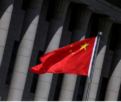 CommentariesTop Story
China’s stock market fall sounds alarm bells
CommentariesTop Story
China’s stock market fall sounds alarm bells
-
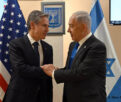 Commentaries
Middle East: Opportunity for the US
Commentaries
Middle East: Opportunity for the US
-
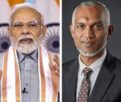 Commentaries
India – Maldives Relations Nosedive
Commentaries
India – Maldives Relations Nosedive
-
AdSense code


















